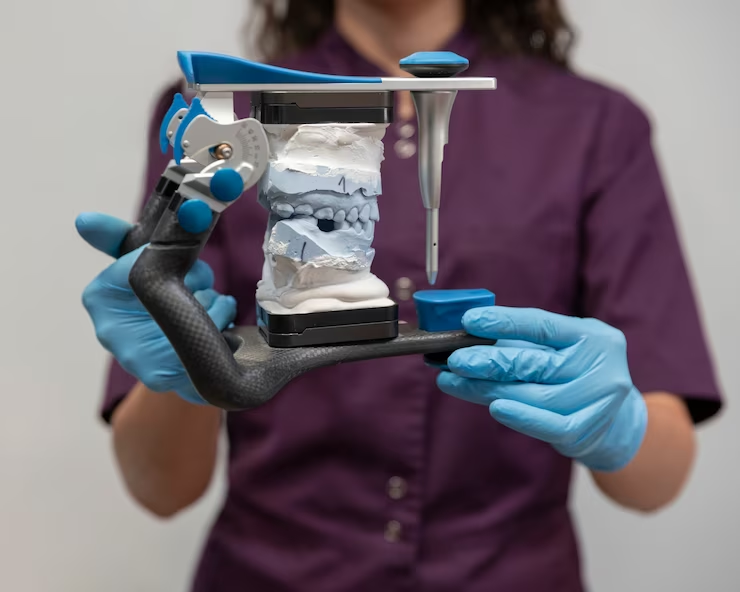In recent years, dental implants have revolutionized the field of dentistry, providing patients with a durable, long-term solution for missing teeth. If you&8217;re considering dental implants, it&8217;s natural to have questions about the process and what to expect. In this comprehensive guide, we&8217;ll take you through each step of the dental implant journey, from initial consultation to final restoration.
Understanding Dental Implants
Before delving into the process, let&8217;s briefly review what dental implants are and how they work. Dental implants are artificial tooth roots made of titanium that are surgically placed into the jawbone. Once implanted, they provide a sturdy foundation for replacement teeth such as crowns, bridges, or dentures. Unlike traditional dentures or bridges, implants offer stability and functionality that closely mimic natural teeth.
Step 1: Initial Consultation
The first step in the dental implant process is an initial consultation with a qualified implant dentist or oral surgeon. During this appointment, your dentist will evaluate your oral health, discuss your treatment goals, and determine if you are a suitable candidate for dental implants. Factors such as bone density, overall health, and the presence of any underlying dental issues will be taken into consideration.
Your dentist may also take X-rays or CT scans of your mouth to assess the condition of your jawbone and surrounding tissues. These images will help your dentist develop a personalized treatment plan tailored to your specific needs.
Step 2: Treatment Planning
Once you&8217;ve been deemed a suitable candidate for dental implants, your dentist will work with you to develop a comprehensive treatment plan. This plan will outline the specific procedures involved, the timeline for treatment, and any associated costs.
During the treatment planning phase, your dentist will discuss the various options for implant placement and restoration. This may include single-tooth implants, implant-supported bridges, or implant-retained dentures. Together, you and your dentist will decide on the best approach based on your individual needs and preferences.
Step 3: Implant Placement
With the treatment plan in place, it&8217;s time to undergo the surgical placement of the dental implants. This procedure is typically performed under local anesthesia to ensure your comfort throughout the process. In some cases, sedation may also be offered for patients with dental anxiety or those undergoing more complex procedures.
During the implant placement surgery, your dentist will make an incision in the gum tissue to expose the jawbone. Using specialized instruments, they will then create small pilot holes in the bone and carefully insert the implants. Once the implants are in position, the gum tissue will be sutured closed, and temporary protective coverings may be placed over the implants to facilitate healing.
Step 4: Osseointegration
After the implants have been placed, a process called osseointegration occurs. This is the natural healing process in which the implants fuse with the surrounding bone tissue, creating a strong and stable foundation for the replacement teeth.
Osseointegration typically takes several months to complete, during which time it&8217;s essential to follow your dentist&8217;s post-operative instructions carefully. This may include avoiding certain foods, practicing good oral hygiene, and attending follow-up appointments to monitor your progress.
Step 5: Abutment Placement
Once osseointegration is complete, the next step is to place the abutments onto the implants. Abutments are small connector pieces that attach to the implants and provide support for the final restorations.
During this procedure, your dentist will reopen the gum tissue to expose the implants and attach the abutments securely. Impressions of your teeth will then be taken to fabricate custom-made crowns, bridges, or dentures that will be attached to the abutments.
Step 6: Final Restoration
The final step in the dental implant process is the placement of the permanent restorations. These may be crowns, bridges, or dentures, depending on the type of implant treatment you&8217;ve chosen.
Your dentist will carefully attach the final restorations to the abutments, ensuring a secure fit and natural-looking result. They will also make any necessary adjustments to ensure proper occlusion and function.
Post-Treatment Care
After your dental implants have been placed and restored, it&8217;s important to maintain good oral hygiene to ensure their long-term success. This includes brushing and flossing regularly, attending regular dental check-ups, and avoiding habits such as smoking that can compromise the health of your implants.
It&8217;s also essential to be mindful of your diet, particularly during the initial healing period. Stick to soft, easy-to-chew foods and avoid hard or sticky foods that could potentially damage the implants or irritate the surgical site.
Conclusion
The dental implant process can seem daunting, but with the right guidance and care, it can lead to a beautiful, functional smile that lasts a lifetime. By following the steps outlined in this guide and working closely with your dentist, you can navigate the implant journey with confidence and achieve the smile you&8217;ve always wanted. If you&8217;re considering dental implants, don&8217;t hesitate to schedule a consultation with a qualified implant dentist to learn more about your options and take the first step toward a healthier, happier smile.
